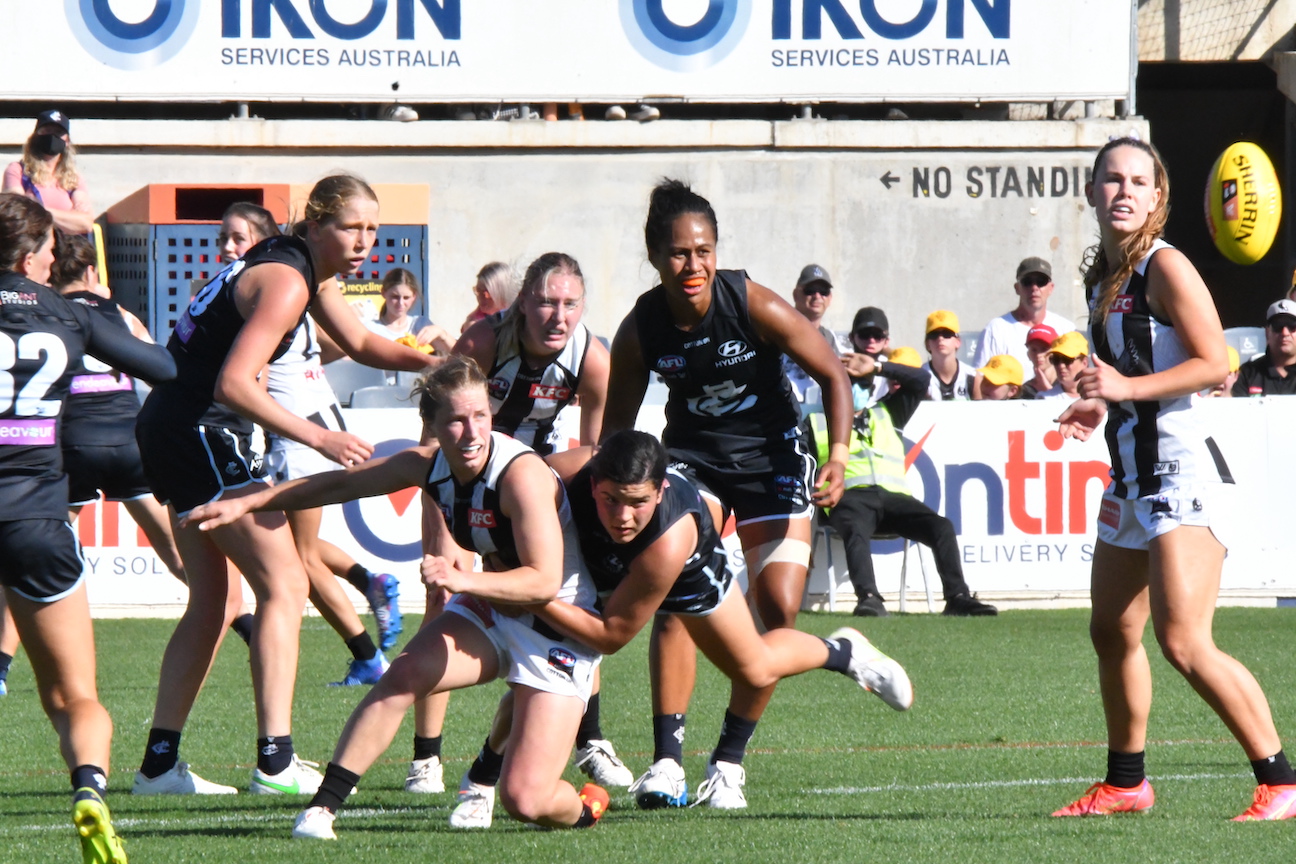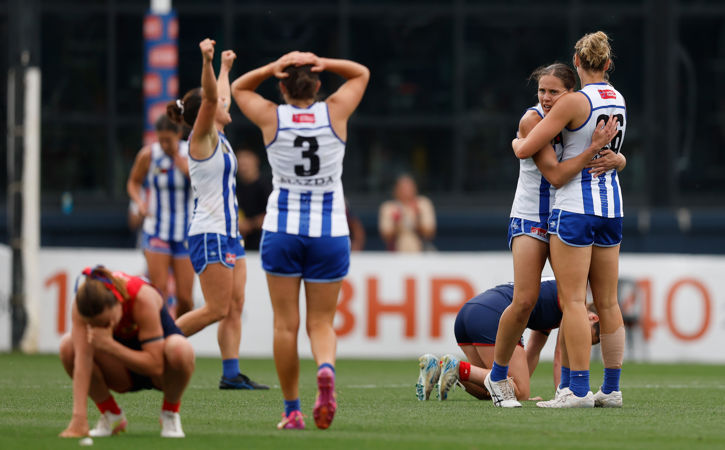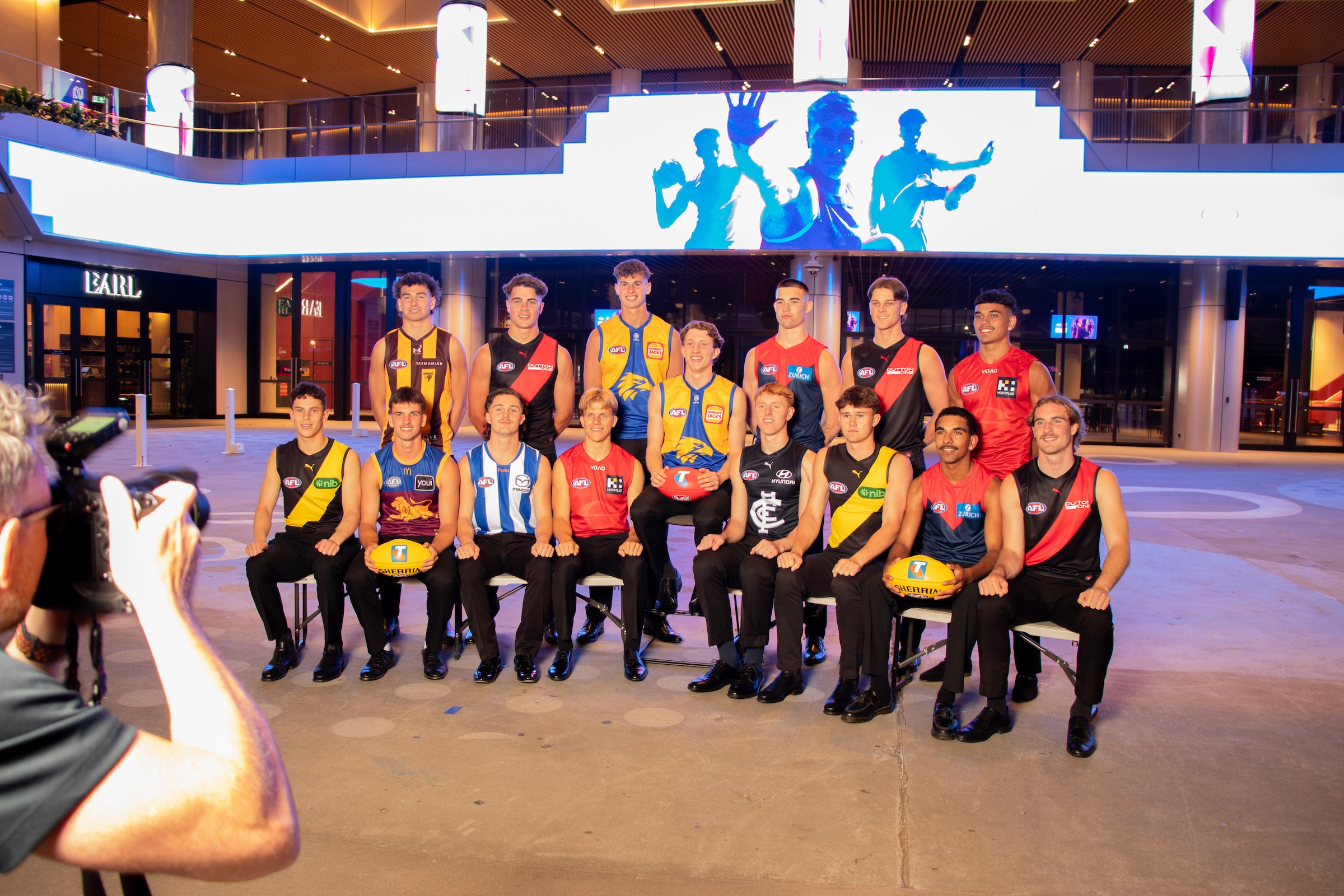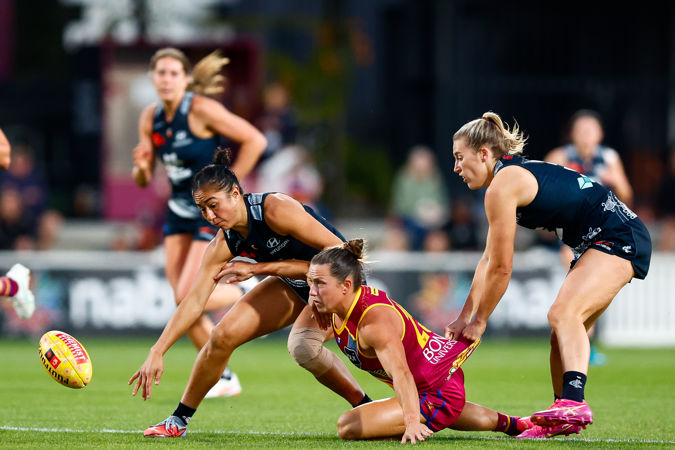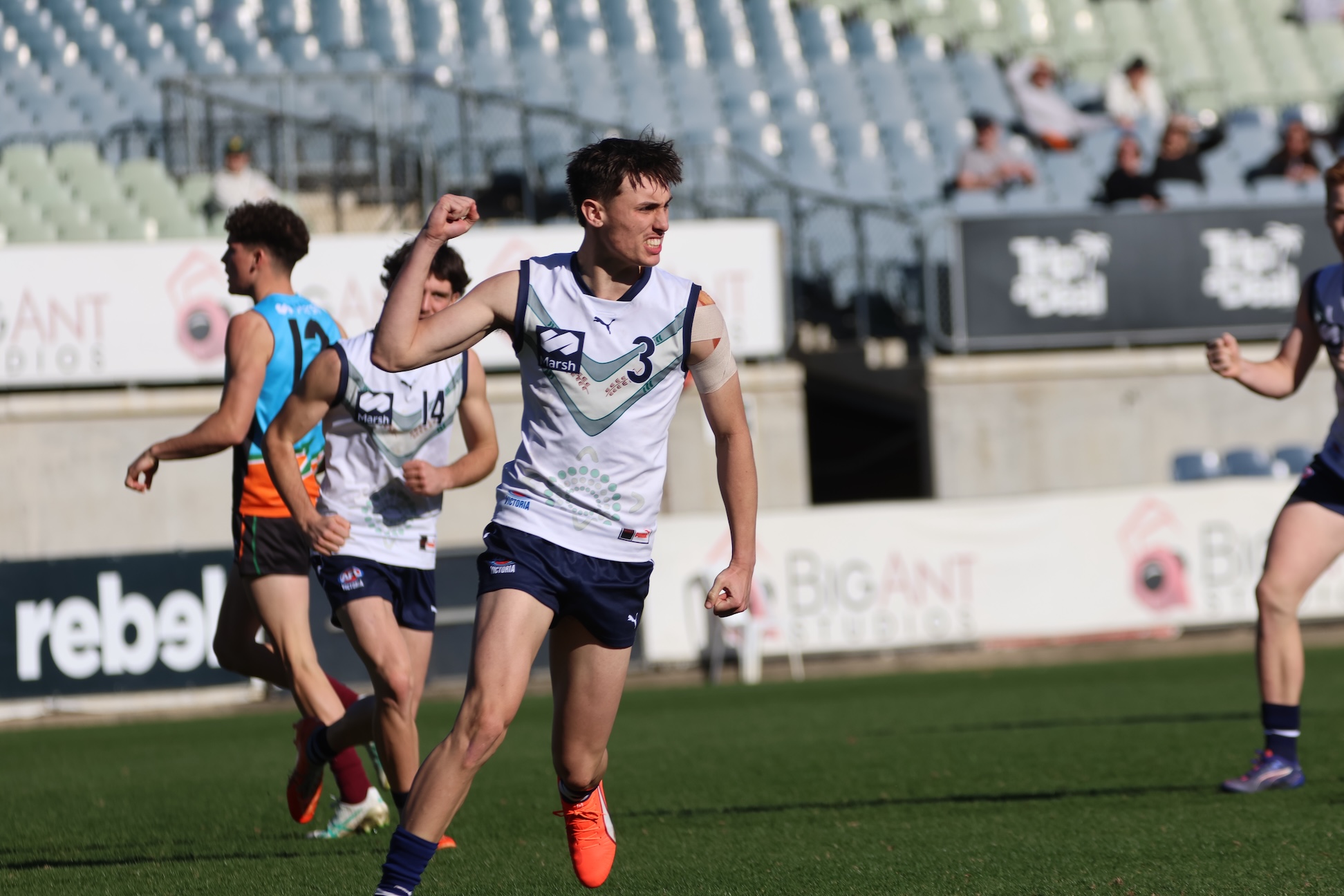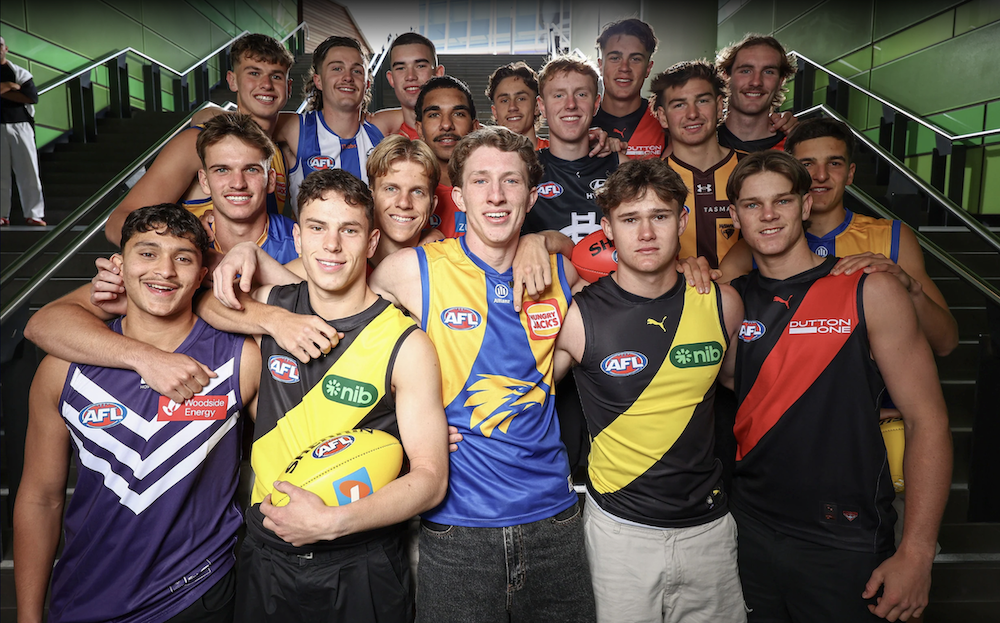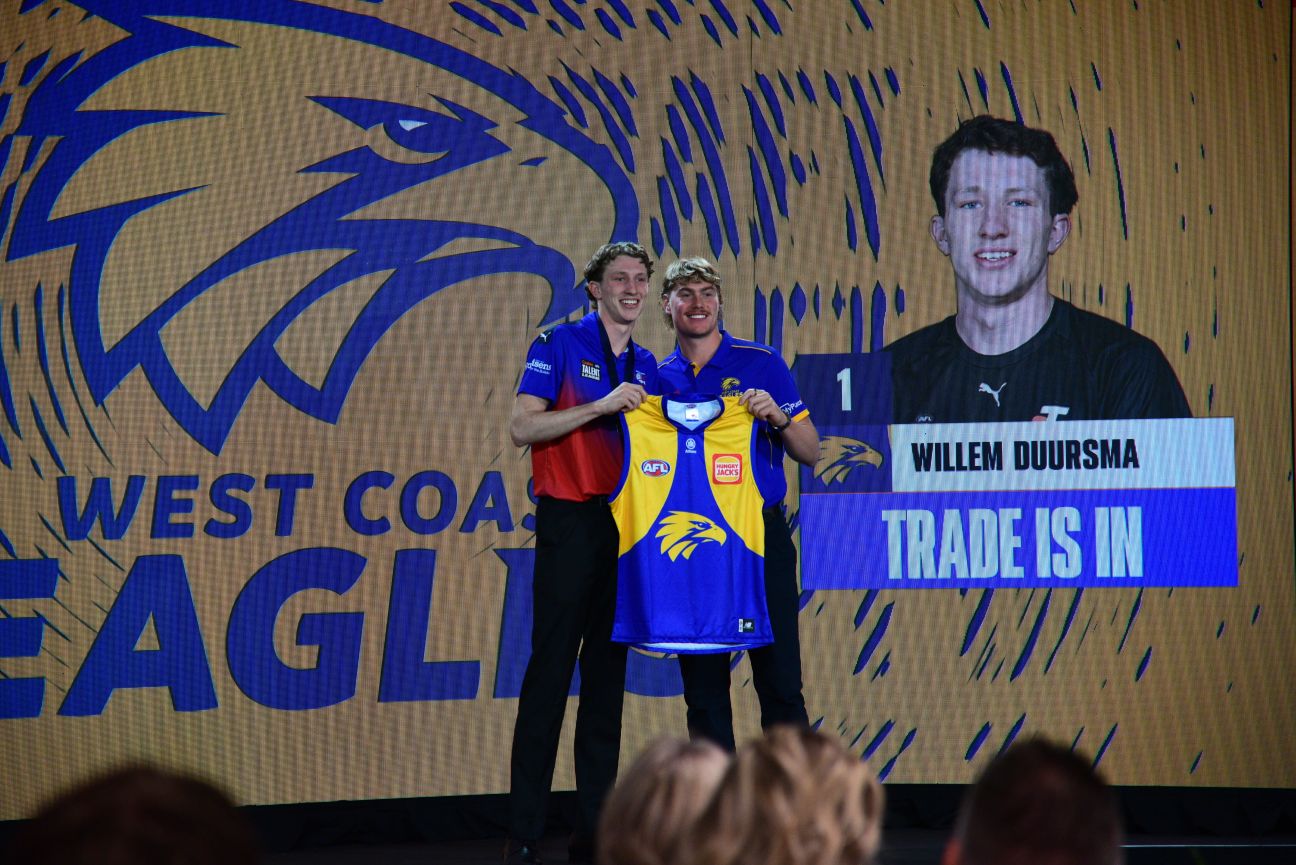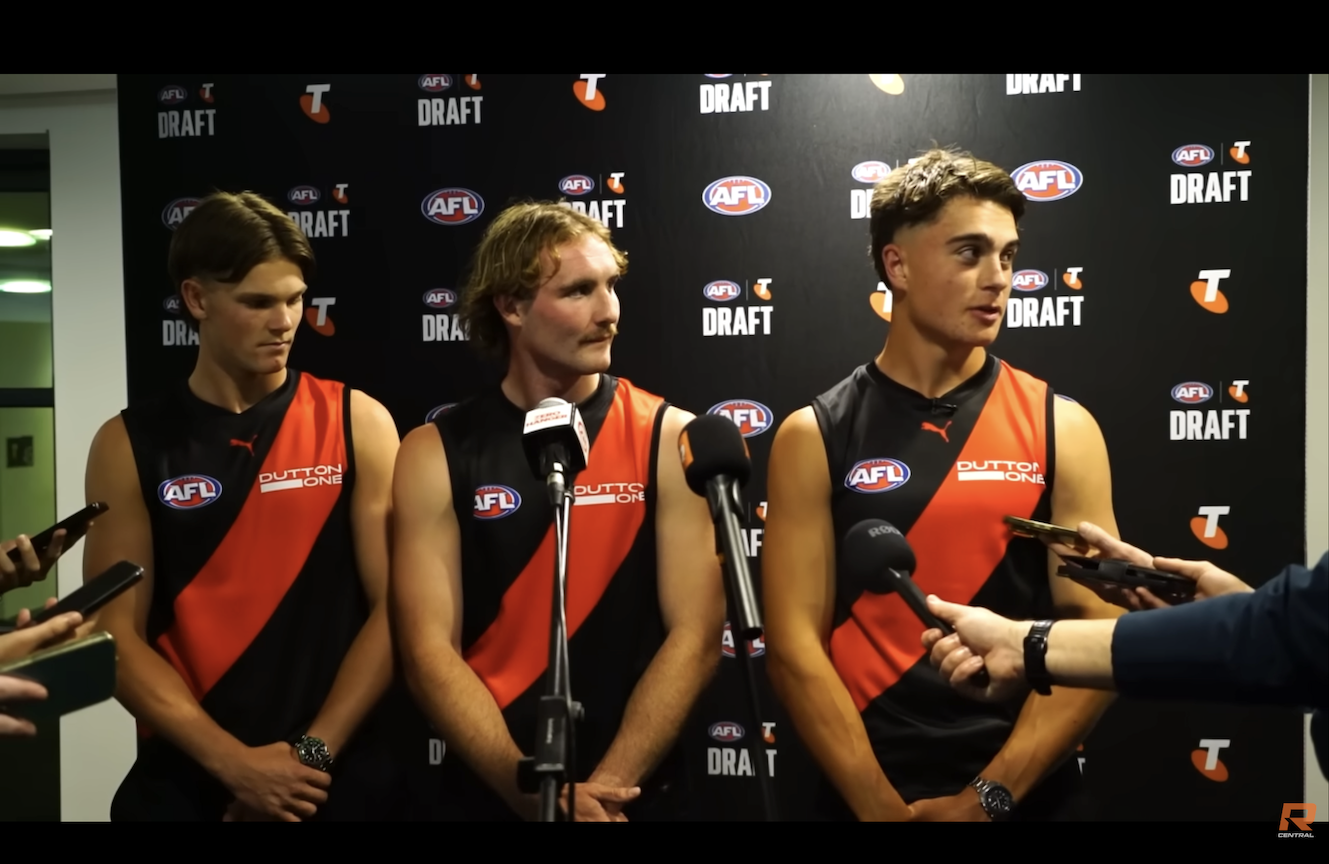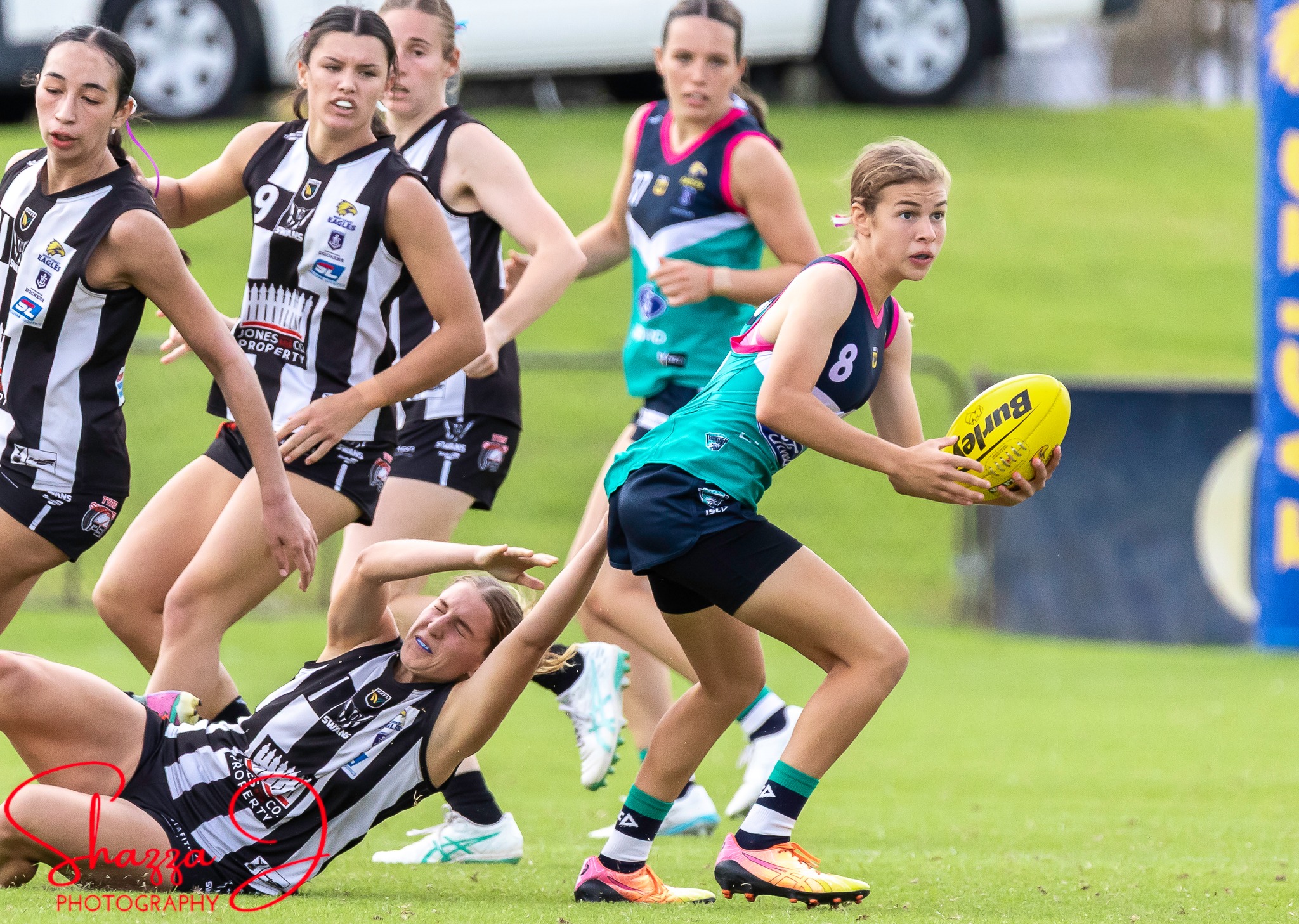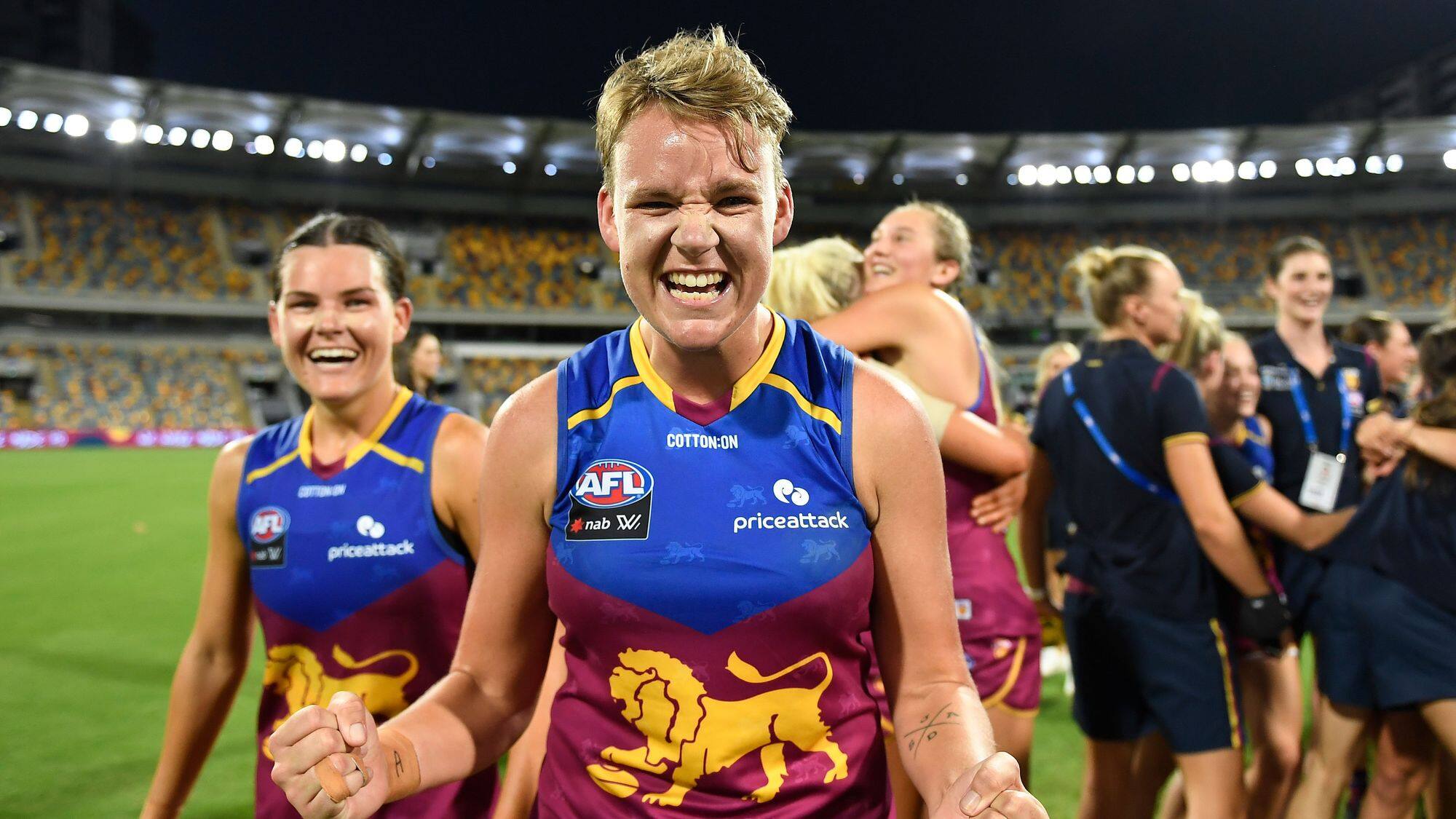IT is amazing to think that more than five years ago the first AFL Women’s season came to a conclusion and the first official off-season commenced. In that off-season, a total of five trades were completed, with some of the biggest names then – and to this day – making moves across the country. We rewind the clock back to 2017 and take a look at each trade and how the teams have fared since.
2017 AFL Women’s Trade Period
A total of six clubs – considering there were only eight at the time – exchanged players and picks, with some massive names and high picks traded. Remarkable, four of the top five picks exchanged teams, and another three picks within the top 13 also went to other sides. The biggest names coming out of the trade period included Western Bulldogs’ Jaimee Lambert who went to the Pies, to fill the hole left by Alicia Eva‘s move to the GIANTS. Tayla Harris made her way down south to Princes Park, with Nicola Stevens crossing over to arch rivals Carlton. Bianca Jakobsson headed to the Dees, while Bella Ayre and Nat Exon both jetted north to the Lions.
GWS receives: Alicia Eva, Pepa Randall & Pick 5 (Jodie Hicks)
Collingwood receives: Jaimee Lambert, Pick 3 (Chloe Molloy), Pick 9 (Darcy Guttridge), Pick 13 (Iilish Ross) & Pick 21 (Kristy Stratton)
Western Bulldogs receives: Pick 1 (Isabelle Huntington) & Pick 4 (Monique Conti)
Carlton receives: Tayla Harris, Nicola Stevens, Pick 12 (Georgia Gee) & Pick 28 (Sophie Li)
Melbourne receives: Bianca Jakobsson, Ashleigh Guest & Pick 33 (Claudia Whitfort)
Brisbane receives: Bella Ayre & Nat Exon
Of the nine players who were traded in the inaugural trade period, just three now remain at their current club – Eva, Lambert and Randall – with Harris heading to the Dees, Stevens, Jakobson and Exon to the Saints, and Ayre is now at The Hangar. With five years gone, it is time enough to look and see how each of the six teams fare out of the trade period, and what contribution the players made to their respective causes.
GWS:
Eva headed north with the knowledge that she would be able to roll into a coaching gig as well as a leadership position there, having previously lead the Calder Cannons in the NAB League. The hard-running midfielder has played 38 games for the orange and charcoal since making the switch, and will play her 50th AFL Women’s match in Round 5 if all goes well. Interestingly, Eva averages the best statistics against her former side, picking up 13.5 disposals and 4.0 inside 50s against the magpies from her two games. The Pick 5 that came with Eva turned out to be Jodie Hicks, who played six games in her debut season, and has managed 20 across the course of her career. She was initially delisted, and missed the 2022 season, but has returned to the GIANTS for Season 7. Randall has remained on the club’s list as well, and become a reliable defender since crossing from the Dees.
COLLINGWOOD:
The Magpies were the biggest players from that trade period, with Lambert winning three best and fairests at the club the last four seasons. Since crossing to the Magpies, Lambert not only became an important player, but one of the best, and her 2020-22 seasons has seen her become one of the best in the league – perhaps even still a touch underrated – averaging more than 65 per cent disposal efficiency, whilst picking up more than four clearances per game, and laying a stack of tackle as well.
The Magpies initially held Pick 1, but traded back to get Pick 3 instead and selected Chloe Molloy who developed into one of the most damaging forwards after being an influential defender. She was joined by Darcy Guttridge (Pick 9), Iilish Ross (Pick 13) and Kristy Stratton (Pick 21), who have all since left the list. The two key players the Magpies gained from the trade period were Lambert and Molloy, who are among the black and white’s top few listed players and two of the three most important in Season 7.
WESTERN BULLDOGS:
Though both the eventual Pick 1 and Pick 4 selections left the club, it is hard to envision a way where the trade of Lambert to get those picks in did not help the Bulldogs win the 2018 flag. The Western Bulldogs selected Isabel Huntington and Monique Conti, with the former winning best on ground in the premiership, whilst Huntington became one of the most dominant key position players in the league. Unfortunately a couple of anterior cruciate ligament (ACL) injuries have stopped her having continuity, but when she returns she will be a huge get for the GIANTS, whilst Conti is dominating for the Tigers. Losing Conti was a massive blow, but it did allow the Dogs to pick up another number one selection in Gabrielle Newton.
CARLTON:
Like the Western Bulldogs, as of Season 7, none of the four players acquired in the trade period are still in the navy blue. Carlton brought in Harris and Stevens, then also picked up dangerous forward Georgia Gee, as well as South Australian Sophie Li. The former became one of the most exciting forwards in the league, while Li headed back to the Crows. While Gee joined the Bombers this past off-season, she was a revelation for the navy blue, and certainly worth the trade to get her.
Harris had four seasons at the Blues, where she was became a key target in leading them to a grand final in 2019, and was still impressive with her best season at a goal per game in 2020. A down season in 2021 and some controversy surrounding her exit left a bitter aftertaste from the split, but prior to that she provided what they would have expected of her, and is now flourishing at Melbourne. Stevens finished one game shy of 50 last season, so will play her milestone match in Saints colours, after announcing she would move to Moorabbin following 42 games at Princes Park.
MELBOURNE:
The Demons were able to pick up Jakobsson and Guest, and then select Claudia Whitfort with Pick 30 (slid down from Pick 33), who both ended up at St Kilda eventually, with Whitfort now up on the Gold Coast. Jakobsson provided two years of service for the Demons as a skilful midfielder/forward, but had a better 2018 season than that of 2019. Her career-best season was last year for the Saints as she stepped up in key absences, but has most notably improved her kicking each year and become more potent. Guest spent two years at the Dees, and after being valuable in 2018, played the four games in 2019 and opted to head to the Dogs, where she played a remaining 22 games – including 19 in the last two seasons – and retired at the end of last season.
BRISBANE:
Unfortunately for the Lions, the two inclusions they receive for trading Harris ultimately did not quite come to fruition long-term in Ayre and Exon. Ayre managed just six games in 2018 and then missed the entire 2019 season due to injury, retiring to focus on her career. Exon played 14 games across the two seasons, with her 2019 year being particularly impressive, averaging 15.4 disposals, 3.1 marks and 6.4 tackles, but then she joined the Saints as part of the expansion side, meaning ultimately the Lions got 20 games out of their two players. Though given Brisbane’s success, their drafting and trading over the years has generally been outstanding.
VERDICT:
On pure star power, the Western Bulldogs would have it and certainly with Conti helping them win a flag. As it stands heading into Season 7, the Magpies though would be the big winners, with Lambert now a three-time best and fairest winner and Molloy a star, while effectively giving up Stevens and Eva. The GIANTS would also be thrilled with their period, having all three still on the list, and two of them being key members of the side. Carlton was well served prior to the departures, while Melbourne and Brisbane had a couple of good seasons out of their players, but would be below the other sides.
1 – Collingwood
2 – Western Bulldogs
3 – Carlton
4 – GWS
5 – Melbourne
6 – Brisbane
